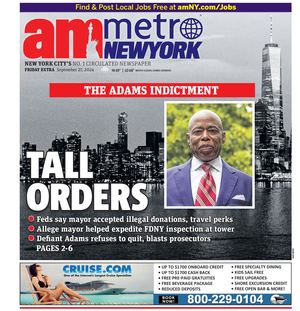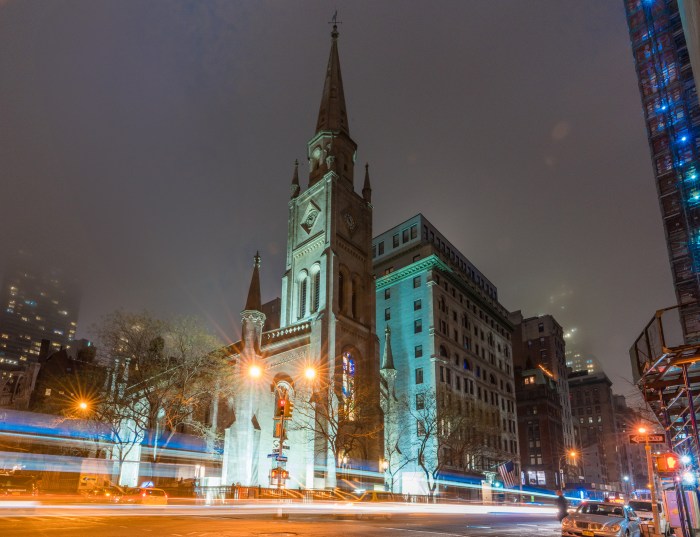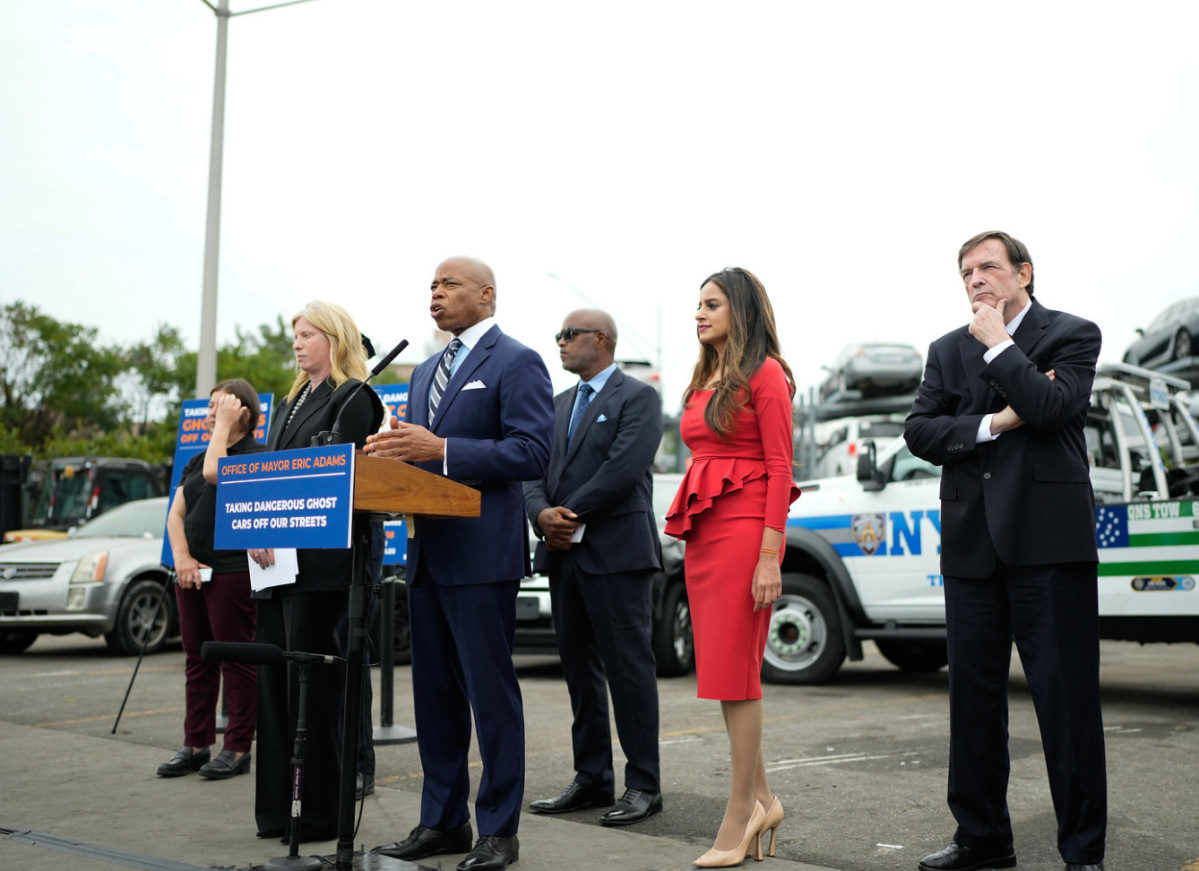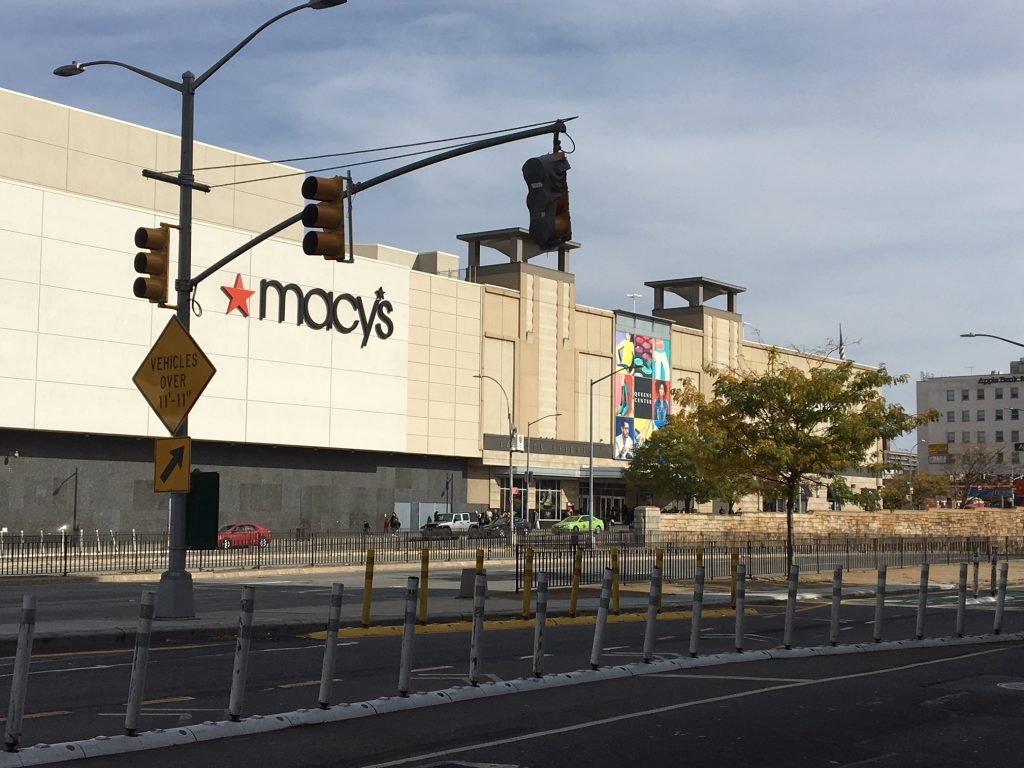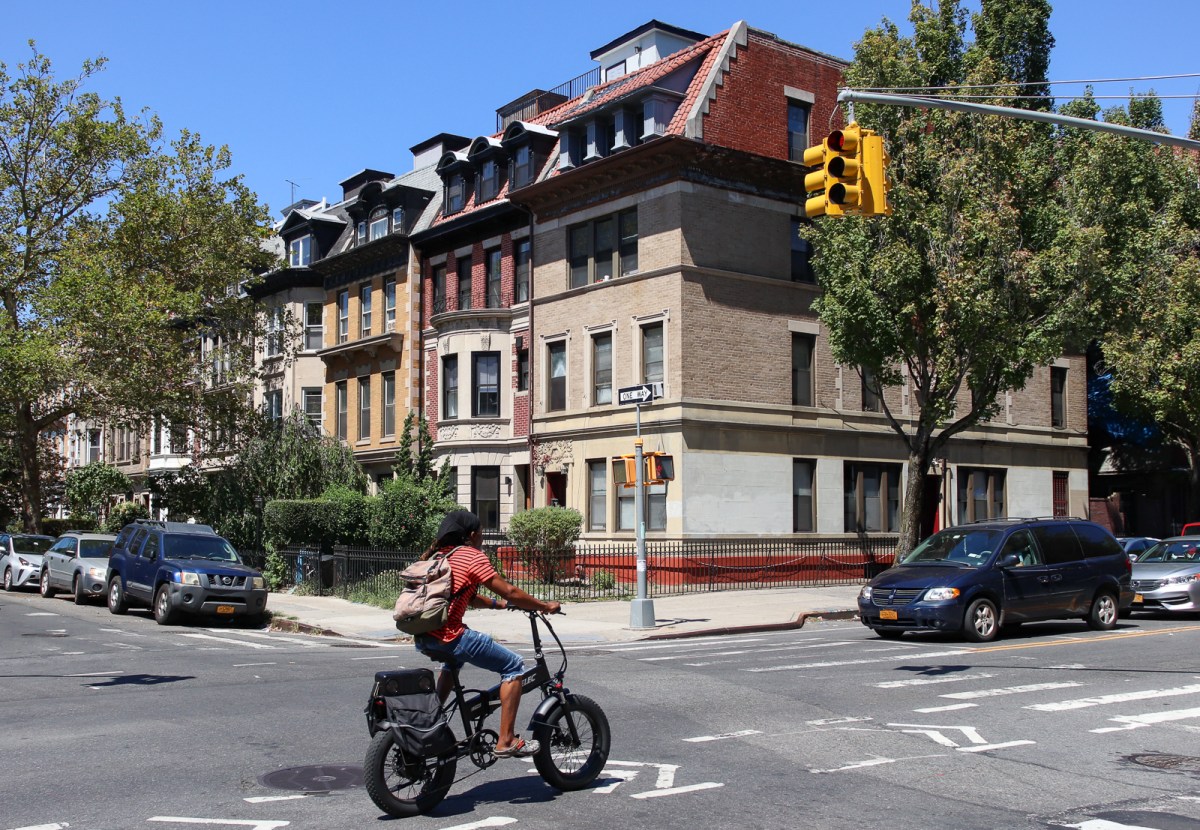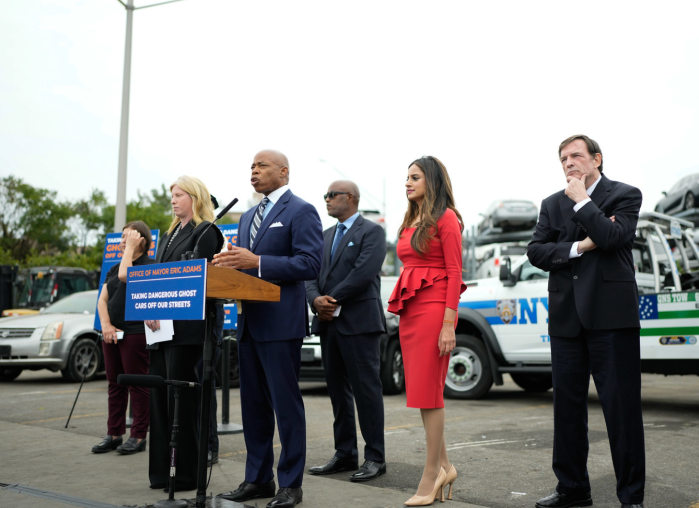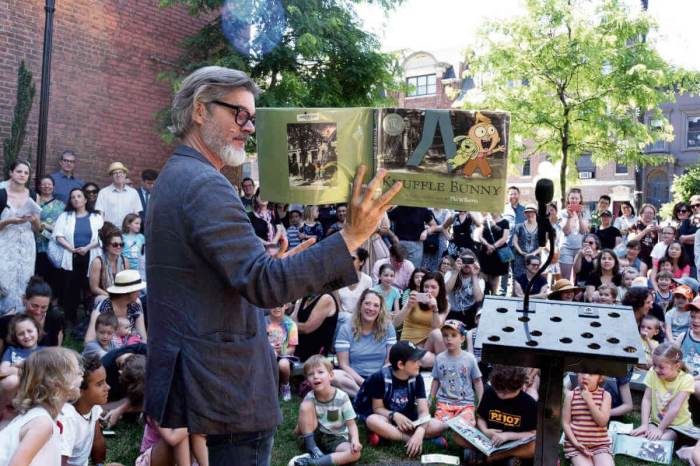By Cristina P. Alesci
Against the backdrop of a gray day, Tiffany & Co. painted a small corner of the Financial District blue on Wednesday morning, when it opened its second Manhattan store at 37 Wall St.
For many of the Financial District’s independent and family-owned shops, Tiffany & Co.’s return Downtown after 67 years, albeit welcome, symbolizes the area’s rapidly changing retail landscape.
“Any good name that comes into this area helps,” said Minas Polychronakis, the owner of Minas Shoe Repair. Polychronakis’s 600 square-foot-shop at 67 Wall St. is just a block away from Tiffany & Co.’s new three-level store, where jewels encased in glass glitter and sparkle. But it’s the restored 1907 original ceiling, featuring an elaborate egg-and-dart crown molding, that grabs the eye.
Visitors drank Champagne and coffee, and ate mini Tiffany gift box shaped cakes — billed as breakfast at Tiffany. Outside, trumpets announced the ribbon cutting and a string quartet played on the corner of Wall and Broad Sts. near the New York Stock Exchange, while cameras clicked away.
But the Tiffany celebration was not the area’s first over-the-top store opening. When Hermès opened its new store at 15 Broad St. three months ago, orange pedicabs were on hand to shuttled tall, thin models around the neighborhood.
“Change of any kind of extra retail presence is good for Downtown,” said Maria Busch, who owns nearby Martin Busch Jewelers on John St. with her husband William. Busch, whose store was founded in 1954, said she’s confident her store’s individual attention will not lose business to Tiffany.
“We are more effective and more flexible,” she said.
Tiffany & Co, however, has its own plans for the neighborhood.
“We are expecting to be all about service at 37 Wall,” said Beth Canavan, Tiffany & Co.’s executive vice president of retail. She explained how busy clients would be able to place online orders and then pick up merchandise at the store later. The company is also planning to have personal shoppers on hand to make house and office calls.
At Wednesday’s opening, company representatives emphasized Tiffany & Co.’s Downtown roots. The company’s founders, Charles Lewis Tiffany and John B. Young, opened their first shop at 259 Broadway.
“We feel like we are being welcomed back home,” said Tiffany & Co.’s president, James E. Quinn. “We had plenty of Downtown customers shopping Uptown; we are just making it a lot easier.”
Wall St. and its environs always had its share of upscale shops, places where the moneyed business class purchased fine European shoes and suits. Most of these retailers, however, were family or independently owned just as Tiffany & Co. was when it first opened in 1837.
For years before Sept. 11, large luxury retailers like Thomas Pink and Todd’s preferred to locate their stores inside the World Trade Center. Beyond the towers, hundreds of smaller stores dominated the retail market.
Now that luxury retailers are making their way back to the area, they are looking for street-level commercial space with addresses close to the new condominiums and rental units.
“Broad and Wall St. is the new luxury corridor,” said Gregg Gropper of Newmark Knight Frank, which brokered Tiffany & Co.’s Wall St. opening.
Historically, the Financial District’s retail sector thrived on middle class office workers and large corporate customers, many of whom have moved away over the years. As former office towers shed business tenants, residential luxury units took their place.
In just five years, from 2000 to 2005, the number of housing units jumped 26 percent in Lower Manhattan according to the American Community Survey, a census bureau survey designed to provide annual updates.
More important to both the new luxury and legacy retailers than the number of people moving Downtown are the income and spending preferences of these new residents. Median household income for residents Downtown rose in 2007 to $162,700 up from $111,000 in 2004 according to the Alliance for Downtown New York. The newer name brand retailers are aiming for the pocketbooks of these new residents.
Joel Kopel, who has managed the 120-year-old jewelry store William Bartham Jewelers on Broadway near Maiden Lane since 1983, thinks the move is great for Downtown and won’t hurt his store. He said he will keep his customers with a wide selection of watches and special jewelry lines at the right price.
“Downtown customers are not the Uptown customers,” Kopel said. “They are looking for better value.”
Yesterday’s typical Downtown customer, however, is not the same as some of the ones beginning to shop Downtown today.
“I do have a girlfriend so I will be shopping here,” said Ross Klein, 23, who designs Timex watches and lives above Tiffany’s new store. “She likes the Frank Gehry stuff.”
It remains to be seen how long-time Downtown retailers accustomed to serving a more price-conscious customer will adapt to the influx of newer label-driven, high earning residents.
Polychronakis, for one, knows the new customers are different. He can tell from their shoes. “These new customers, they use sneakers and flip-flops,” he said. “They don’t want their shoes shined.”
